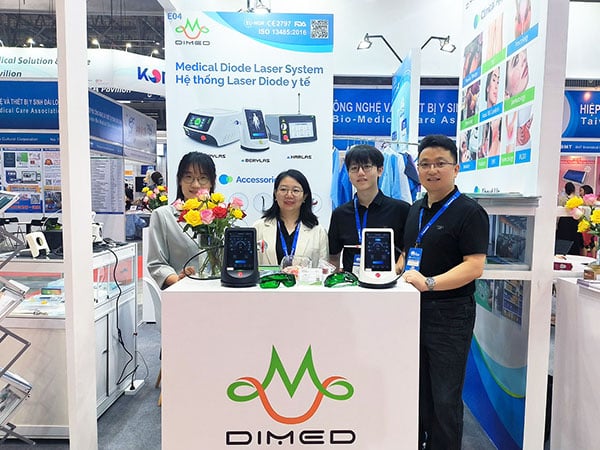Quality Control Test for Dimed Laser – ISO 13485 Quality Management System
Quality is one of the key factors for Dimed Laser to win the trust of customers. Watch this video to learn how we ensure product quality according to ISO 13485 quality management system.
- Step 01 Vibration test
The purpose of this test is to simulate the vibration and shock experienced by the product during transportation, in order to evaluate its resistance and ensure reliability.
- Step 02 Visual inspection
Check the appearance of the product to ensure that the appearance meets the requirements.
- Step 03 Software check
Check whether the software version meets requirements.
- Step 04 Power test
Utilize a power meter for measuring the actual power output and conducting a comparison with the nominal power of the device in order to ascertain its compliance with power qualifications.
- Step 05 Wavelength detection
Use a spectrometer to capture the laser wavelength and observe whether it is qualified.
- Step 06 Checks pulse waveform with oscilloscope
Connect the probe of the oscilloscope to the pulse source that you want to test, adjust oscilloscope parameters, capture the pulse waveform, and observe for stability, conformance with expectations, as well as any issues such as jitter and distortion.
- Step 07 Ground resistance test
The grounding resistance test is conducted to verify the effectiveness of the medical device’s grounding system and ensure compliance with standards. This test measures the device’s grounding resistance to guarantee safe current flow in fault conditions, preventing electric shock or other safety hazards.
- Step 08 Withstand voltage test
Voltage resistance testing is to verify that the insulated system of a medical device can withstand a specific voltage level without breakdown or leakage. The purpose is to ensure that medical devices can effectively isolate and protect users from hazards such as electric shocks during use.
- Step 09 Leakage current test
The leakage current test is designed to evaluate the leakage current of medical devices under normal operating conditions. The size of the leakage current is directly related to the safety of the user. An excessive leakage current may cause safety accidents such as electrocution for the user.
- Step 10 Aging test
Place the device in a constant temperature and humidity chamber and check whether the performance of the device meets the requirements within the specified temperature range after 30mins aging test.
- Step 11 Power measure after aging test
The operation of the product within the specified time can test whether the stability and power of the product meet the requirements and ensure that it meets the pre-industry standards and requirements.
- Step 12 Inspection record
Each laser will have a document to record its production process, and qualified can be stored to ensure the traceability of the laser.











Leave A Comment